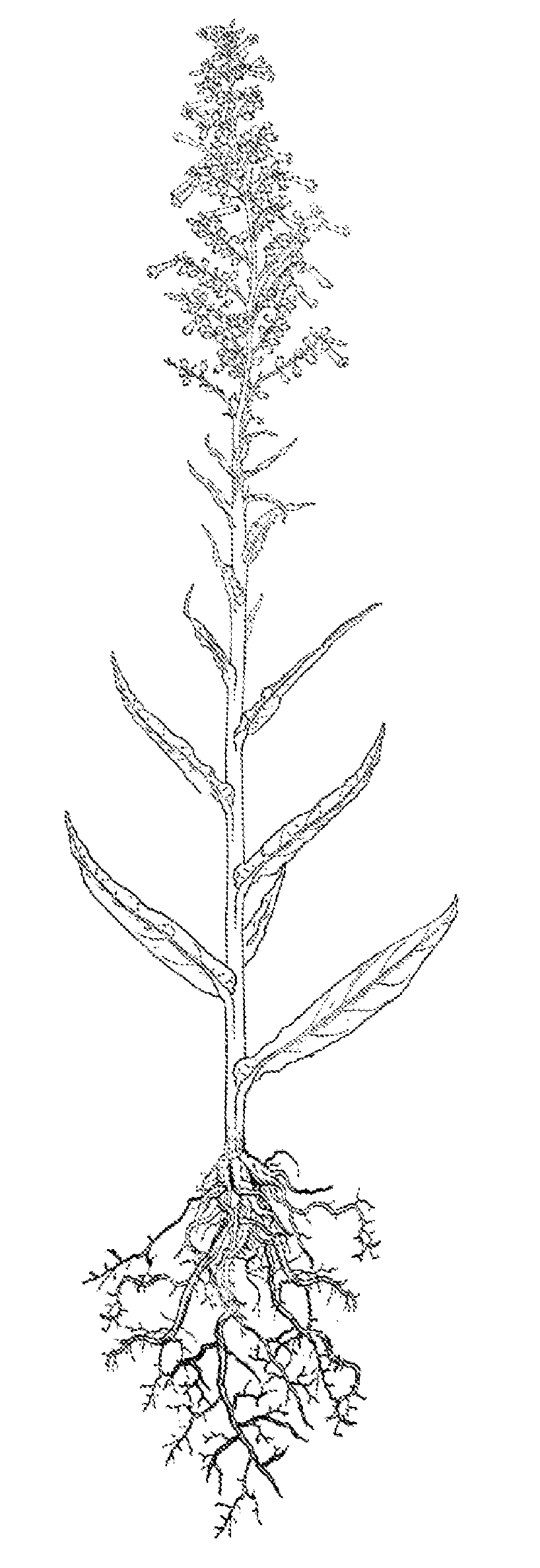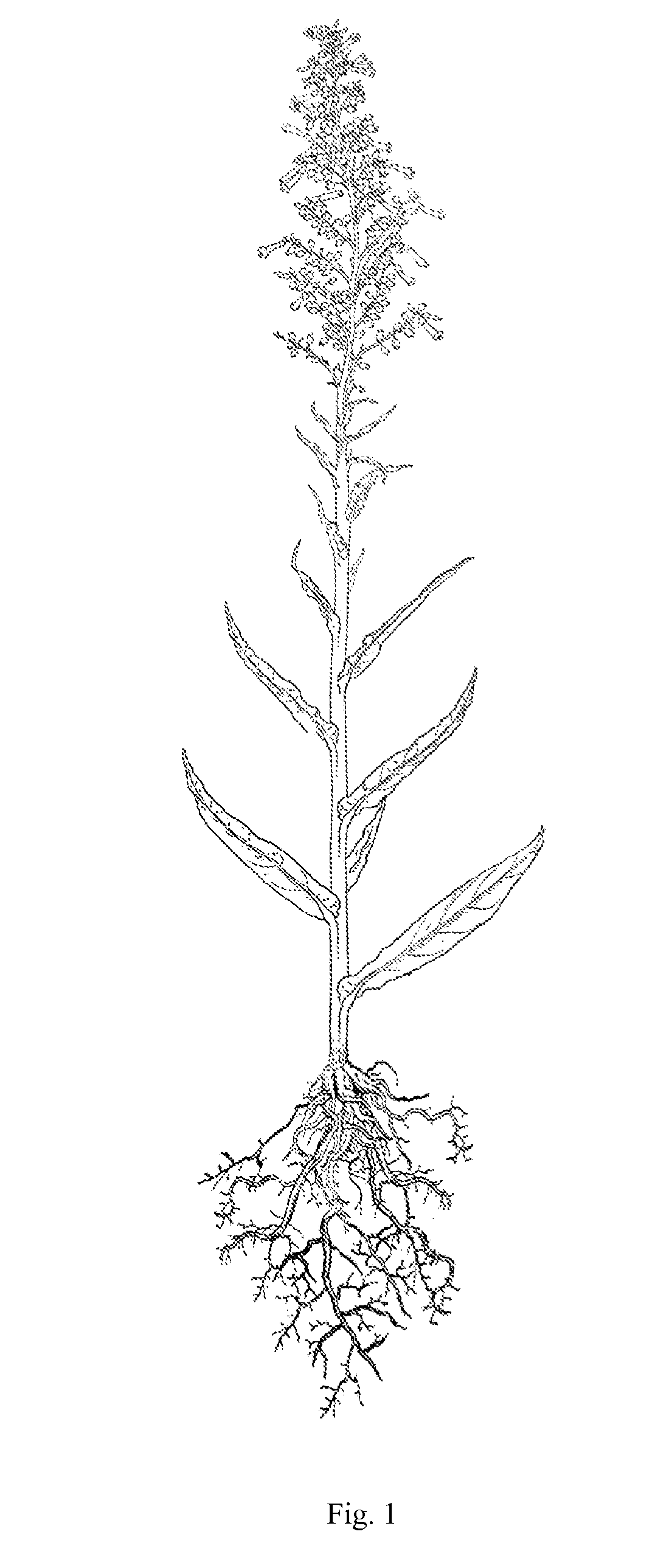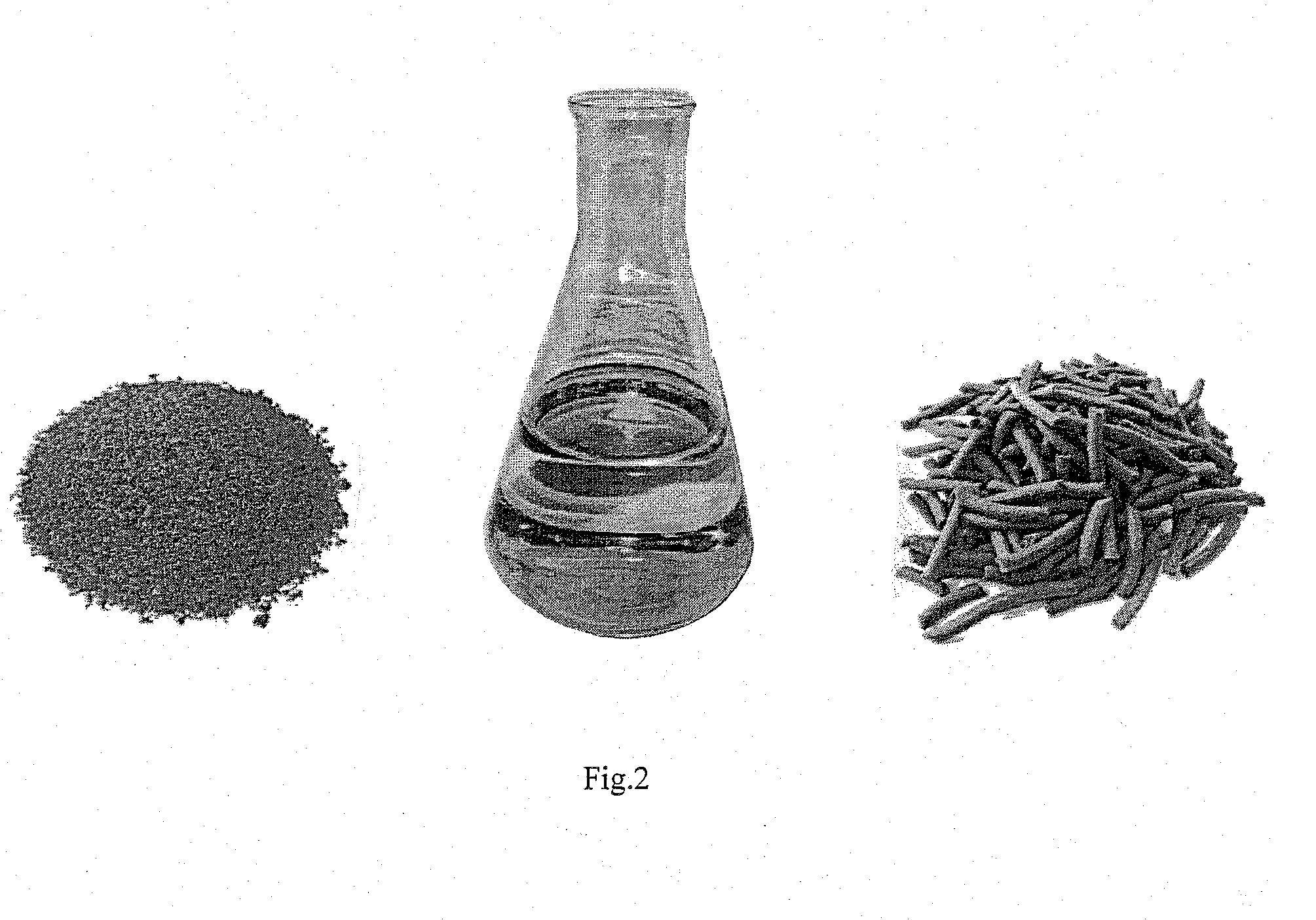Mutagenized tobacco plant as seed culture for the production of oil for energetic, industrial and alimentary uses
a technology of energy, industrial and alimentary use, which is applied in the direction of biofuels, fuels, waste based fuels, etc., can solve the problems of increasing raw materials costs and searching for new energy sources, and achieves the effects of maximising maximizing the production of seeds, and high production
- Summary
- Abstract
- Description
- Claims
- Application Information
AI Technical Summary
Benefits of technology
Problems solved by technology
Method used
Image
Examples
example 1
Chemical Mutagenesis
[0132]The seed of the variety selected for the mutants induction by chemical mutagenesis, has been placed in a 100 ml flask in the amount of 20 gr per experiment, corresponding to about 200,000 seeds. 50 ml of deionised water have been added to the flask and the seeds have been rehydrated for 14 hours at 25° C. The water has been than substituted with an 0.5% EMS aqueous solution. The seeds have been shacked using a magnet for a time variable from 0.5 to 5 hours, depending on the variety, that in preliminary trials showed a higher mutation frequency for morphological characters such as height of the plant, seeds dimensions, leaves shape, capsules numbers, seed production per plant etc.
[0133]Once the treatment period was ended, the mutagenic solution has been discarded by pouring the seeds in a thin sieve and rinsing them for several minutes under running water. Afterwards, the seeds have been rinsed for 6 times in a flask, by adding 50 ml of water and shaking the...
example 2
Somaclonal Variants Induction
[0136]The seed of the variety selected for inducing somatoclonal variants has been sterilised by immersion for 5 minutes in a 20% sodium hypochlorite solution followed by an immersion for 1 minute in 70% ethanol followed by 5 washes in sterile water. The seed has been allowed to germinate in rectangular plastic containers of 10 cm per side and of 12 cm of height containing agarised MS medium. From the fully developed plants, parts of 0.5 cm per side of leaf have been cut and placed in Petri discs with MS1 (MS+1 mg / lt 2,4-D) medium in order to induce the formation of the callus. Also individuals F1 obtained from interspecific crossings have been used. The callus collected from leaf discs has been placed in liquid MS1 medium in 250 ml flasks containing 50 ml of medium and shacked at 80 rpm on a rotating plate maintained at 28° C. with a 16 hours photoperiod.
[0137]The callus has been maintained in liquid culture for several generations renewing the culture ...
example 3
Crossing and Chromosomal Duplication
[0138]Many Nicotiana species are sexually compatible with Nicotiana tabacum and, even if the crossing product is sterile, it is possible to backcross using the parental plants as pollinators or induce the formation of amphidiploids. In this species, the work is facilitated by the fact that it is possible to obtain intergeneric hybrids F1 populations of many thousands of individuals, allowing to perform the improvement program based on amphidiploids. The crossings have been carried out both using parental Nicotiana spp. having the same chromosome number (e.g. N. paniculata x N. solanifolia; N. tabacum x N. rustica) or a different chromosome number (eg. N. tabacum x N. paniculata; N. tabacum x N. longiflora). The F1 individuals obtained by some cross combination have been cultivated in greenhouse, in order to verify their phenotypic characteristics and to cross them with both the parental plants, as well as allowed to germinate in vitro and micro pr...
PUM
| Property | Measurement | Unit |
|---|---|---|
| Fraction | aaaaa | aaaaa |
| Fraction | aaaaa | aaaaa |
| Fraction | aaaaa | aaaaa |
Abstract
Description
Claims
Application Information
 Login to View More
Login to View More - R&D
- Intellectual Property
- Life Sciences
- Materials
- Tech Scout
- Unparalleled Data Quality
- Higher Quality Content
- 60% Fewer Hallucinations
Browse by: Latest US Patents, China's latest patents, Technical Efficacy Thesaurus, Application Domain, Technology Topic, Popular Technical Reports.
© 2025 PatSnap. All rights reserved.Legal|Privacy policy|Modern Slavery Act Transparency Statement|Sitemap|About US| Contact US: help@patsnap.com



